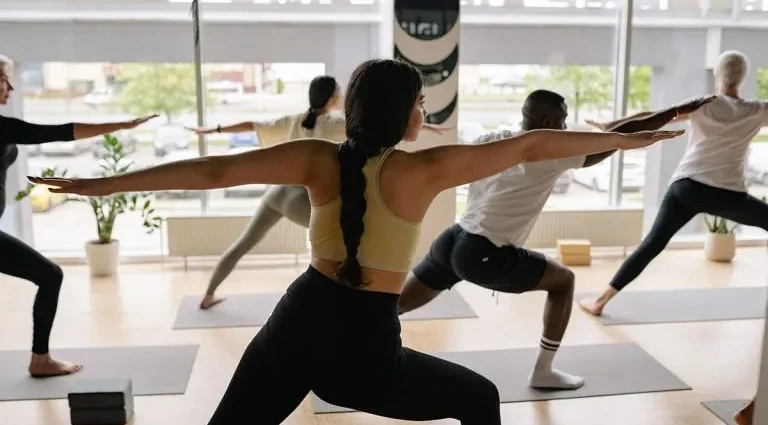Practicing Yoga has become one of the most idealized physical-spiritual activities. The numerous accounts and celebrities that show their postures have drawn attention to this form of physical and mental exercise.
Within the wide range of types of yoga that can be practiced, we will delve into Ashtanga Yoga, knowing what it consists of, what its benefits are, and what the postures of the most typical Ashtanga Yoga are.
Definition of Ashtanga Yoga
The Ashtanga Yoga modality is a very dynamic yoga practice that combines exercises or postures -asanas – with breathing techniques -pranayama- and meditation. During practice, breathing and synchronized movements of the Vinyasa type are still joined, linking each posture with the next within each of the eight steps involved. On the other hand, each posture is designed to follow an exact number of movements and breaths. The goal is to achieve greater synchronization.
The Ashtanga Yoga is composed of a series of poses and breathing movements, but also of three elements that help you achieve that perfection in coordination.
On the one hand, the Ujjayi breathing, with which the glottis is slowly contracted, in such a way that it promotes slower but deeper breathing. Added to this are the bands, which are muscle contractions that help control the effort, and the Dristi or concentration of the look.
Benefits of Ashtanga Yoga:
Today, thousands of people around the world have become convinced of the benefits of Ashtanga Yoga as one of the most complete types of yoga.
Ashtanga Yoga Are Several Techniques In One.
For the proper execution of the steps that constitute this form of yoga, a series of body and mental exercise techniques are required that drink directly from the more traditional yogis. Remember that Ashtanga Yoga is the combination of postures, breathing, and large doses of meditation.
Asanas work the strength, endurance, and elimination of toxins through the eight paths or steps involved. Ashtanga Yoga is intense and demanding.
Improve Your Emotional Control Capacity
In addition to working your body and mind from a holistic perspective, and improving your shape status and self-knowledge, it is one of the most interesting and recommended exercises to learn how to control emotions and stimulate the mind more.
Not in vain, it is said that yoga allows us to increase our capacities by knowing how to avoid and carry out stressful situations and above all, by enhancing concentration and relaxation, keys to liberal creativity.
Suitable For All Audiences
Ashtanga Yoga can be adopted by anyone in any age range and any situation. If you’ve led a very sedentary life, it’s perfect to start intensely but without excesses. Now, if you’re pregnant or think you can be pregnant, you better avoid it because postures can do a lot of harm to the baby.
The Most Typical Ashtanga Yoga Postures:
All the postures and series that are performed in Ashtanga Yoga are always executed in the same order. Each of the usual series is divided into four sections: initial asanas, main asanas, stretching asanas, and finishing asanas. What are the basics and most typical?
Dog Pose or Mukha Svanasana
Starting from a position with four legs, with your hands and fingers open on the ground, your feet are separated at the height of the hip and align with your hands. Make the strength to lean on the tip of your feet and slightly push the pelvis while stretching your arms and legs. So, take steps with your hands. He ends up supporting all his feet and his head looking down.
Child’s Pose or Balasana
Starting from the knee position, we sat on the heel. Tilt your back while loose air until you get to the ground with your forehead.
Cobra Pose or Bhujangasana
Here it falls lying face down. The arms should be slightly separated from the body with palms leaning on the floor. The chest and back are raised while coordinating with breathing.
